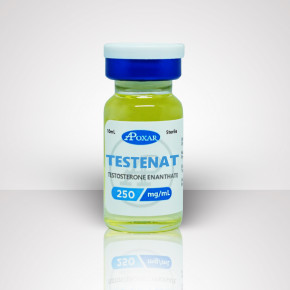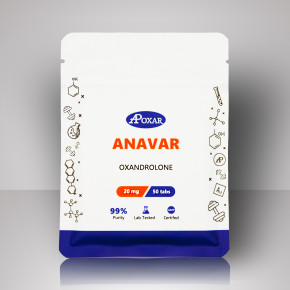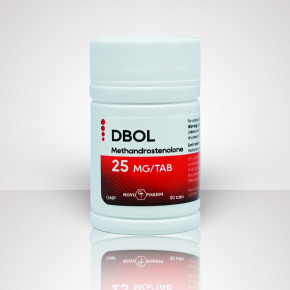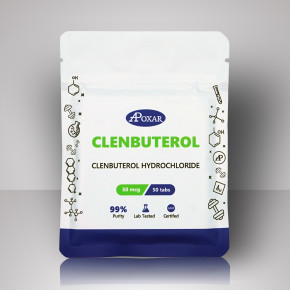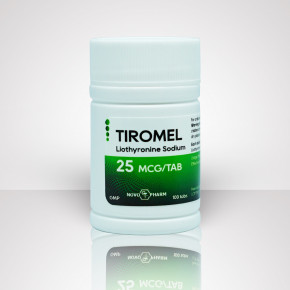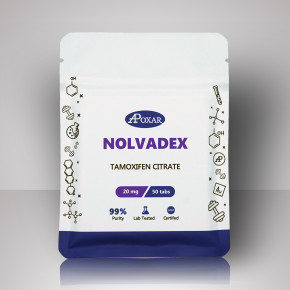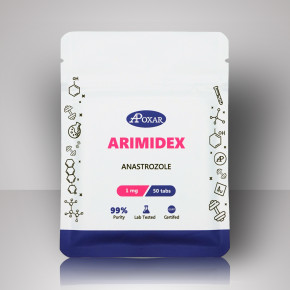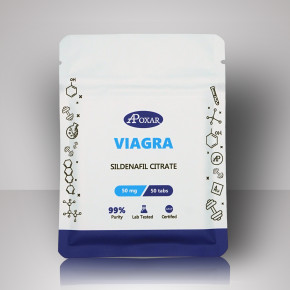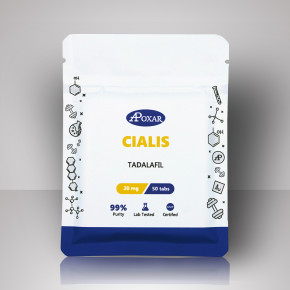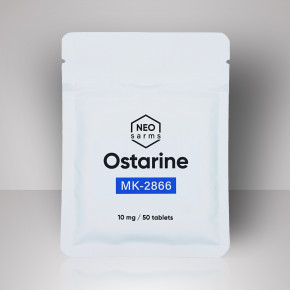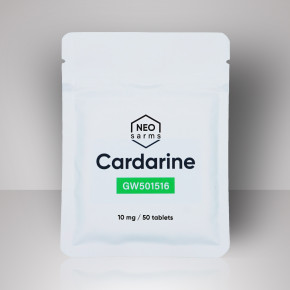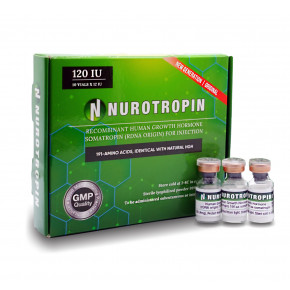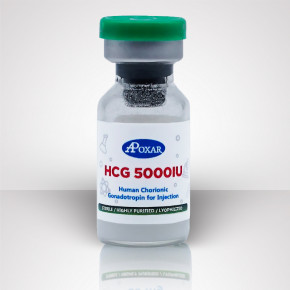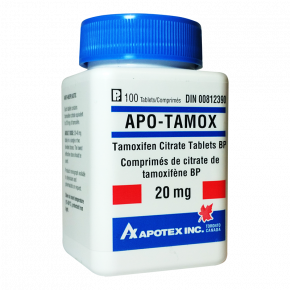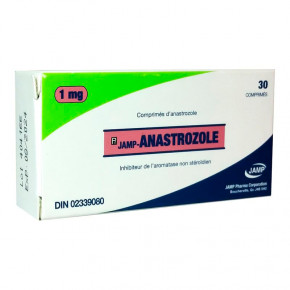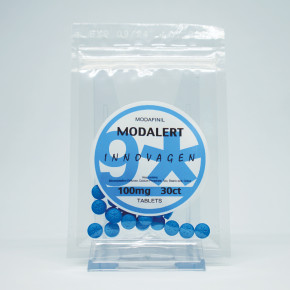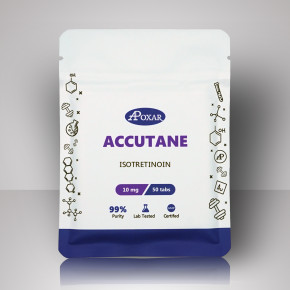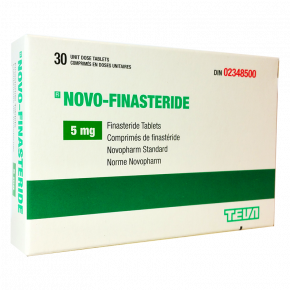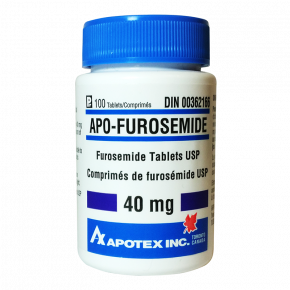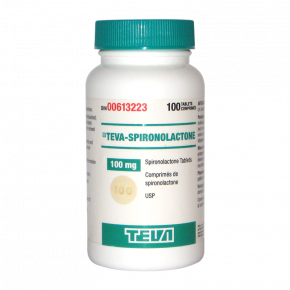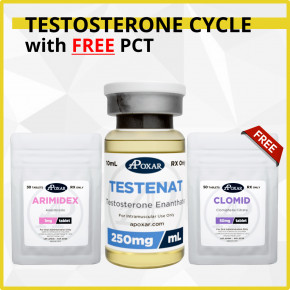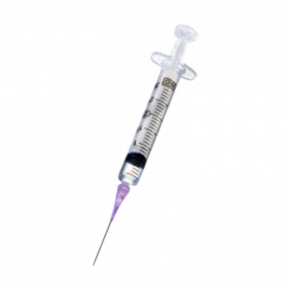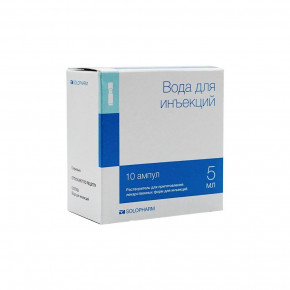 Proudly Serving Canadians Since 2012
Proudly Serving Canadians Since 2012Finasteride
-
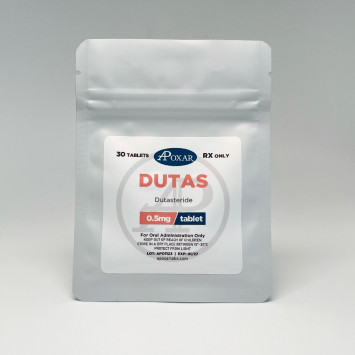
Dutasteride (Hair Loss, Prostate Health) 0.5mg/30tabs - Apoxar
Dutasteride is a 5-alpha reductase inhibitor: the drug that mitigates the conversion of testosterone into dihydrotestosterone (DHT). It’is popular among athletes because of its ability to address and reduce the risk of hair loss and prostate enlargement on cycle.
- Dosage: 0,5mg ED
- Cycle duration: 3-6 months
- On-cycle therapy: not required
- Stack with: Sometimes stacked with Flomax
Increases Strength
Improves Sex Drive
Muscle Gains
$60.00 -

Propecia (Finasteride) 2.5mg/50tabs - Apoxar
Propecia (Finasteride) 2.5mg/50tabs - Apoxar
Increases Strength
Improves Sex Drive
Muscle Gains
$60.00 -
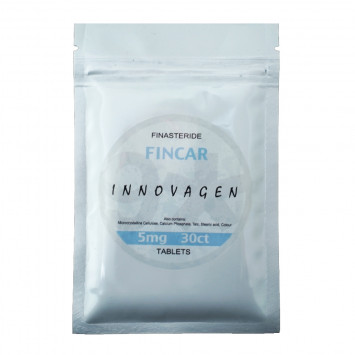
Finasteride 5mg/30tabs - Fincar - Innovagen
Finasteride 5mg/30tabs - Fincar - Innovagen
Increases Strength
Improves Sex Drive
Muscle Gains
$60.00
Proscar (Finasteride) - Description
Finasteride is an inhibitor of 5a-reductase, which is the enzyme responsible for converting testosterone into DHT (dihydrotestosterone). This drug can efficiently reduce the serum concentration of DHT, thereby minimizing the unwanted androgenic effects that result from its presence. The effect of this drug is quite rapid, suppressing serum DHT concentrations as much as 65% within 24 hours after taking a single 1mg tablet. Medically, this drug is used to treat benign prostate hyperplasia (prostate enlargement) and androgenetic alopecia (male pattern hair loss). It is also being investigated as a potential treatment for hirsutism, which describes male-patterned hair growth on the face or body of a woman. Male athletes and bodybuilders are interested in finasteride for its ability to reduce the androgenic side effects associated with the use of testosterone and certain derivatives.
Finasteride is a specific inhibitor of the Type-II 5a reductase enzyme. There are actually two isozymes of reductase in the human body, labeled as Type-I and Type-II. Type-I 5a- reductase is predominantly found in the liver and sebaceous glands of the skin. Type-II 5a-reductase is primarily found in the prostate and hair follicles. The Type-II enzyme is responsible for about 2/3rd of the circulating DHT, while the Type-I enzyme produces the remaining 1/3rd. As an inhibitor of Type-II reductase only, finasteride has a more pronounced effect with regard to preventing hair loss but is somewhat less effective at mitigating oily skin and acne. Since hair loss is the primary worry among most male steroid users who use reductase inhibitors, finasteride remains a popular ancillary drug in spite of its inability to block DHT conversion in all tissues.
Finasteride is considered a highly specific drug, as it has a little spillover effect on the other hormones in the body. It has no affinity for the androgen or estrogen receptors and therefore does not exhibit any androgenic, antiandrogenic, estrogenic, or anti-estrogenic properties. It has no appreciable impact on circulating levels of cortisol, thyroid-stimulating hormone, or thyroxine, nor does it appear to alter HDL/LDL cholesterol levels. Changes in luteinizing hormone (LH) or follicle-stimulating hormone (FSH) are also not notable, and it is not shown to have a significant effect on the hypothalamic-pituitary-testicular axis. Finasteride has been shown to increase the circulating levels of testosterone by roughly 15%, however, since a greater amount of the androgen is being left unaltered by the reductase enzyme.
History
The first release of finasteride in the U.S. was under the brand name of Proscar® (Merck), which was approved by the FDA in 1992. It was specifically given approval for use by patients with benign prostate hyperplasia (prostate enlargement). In December 1997, the Food and Drug Administration again approved finasteride, this time for a different purpose, namely the treatment of male pattern hair loss. Merck released the drug under a different brand name for this purpose, Propecia®, which contained the only 1/5th of the Proscar® dosage. Today, both Proscar® and Propecia® remain the dominant brands of finasteride on the global market. How Supplied: Finasteride is most commonly supplied in tablets of 1 mg and 5 mg.
Structural Characteristics
Finasteride is a synthetic 4-azasteroid. It has the chemical designation 4-Azaandrost-1-ene-17-carboxamide, N-(1,1-dimethylethyl)-3-oxo-, (5α, 17β)-.
Warnings (Pregnancy)
This drug must never be taken during pregnancy. Finasteride can be absorbed through the skin. Women who are, or might become pregnant, should never handle broken or uncoated finasteride tablets. The DHT blocking the action of finasteride can cause severe developmental problems to an unborn male fetus, even in very small amounts. Unaltered finasteride can also be recovered in the semen. It is unknown if enough drugs can be absorbed during sexual intercourse to harm a developing male fetus. The use of condoms or abstinence is recommended during therapy.
Side Effects
Adverse reactions commonly associated with the short-term (1 year) use of finasteride include impotence (8.1%), decreased libido (6.4%), decreased ejaculate volume located. (3.7%), ejaculation disorder (.8%), gynecomastia (.5%), breast tenderness (.4%), and rash (.5%). Note that persistent (permanent) sexual side effects have been noted in a small percentage of patients.
Administration (General Considerations)
Reductase inhibitors cannot completely protect against androgenic side effects such as steroid-induced hair loss, oily skin, and acne. Reductase inhibitors lessen these side effects by reducing, not eliminating, the level of androgenic activity in the skin and scalp. Androgenic and anabolic effects are both mediated by the same receptor, and there is no way presently known to completely separate these two properties. Dihydrotestosterone is also not unique in its ability to facilitate androgenetic alopecia (male pattern hair loss). DHT inhibition, therefore, does not offer complete protection against this side effect. Reductase inhibitors are only applicable to testosterone, methyltestosterone, and fluoxymesterone. These three drugs are converted to stronger “dihydro” derivatives by the reductase enzyme. Nandrolone and some of its derivatives become weaker upon interaction with this enzyme, as their “dihydro” metabolites bind the androgen receptor very poorly. Reductase inhibition may intensify their androgenic side effects. Methandrostenolone and boldenone undergo conversion to stronger 5-alpha reduced metabolites, but at such small levels, that reductase inhibitors have little effect on their androgenicity. Most other synthetic anabolic steroids are unaffected by the reductase enzyme and reductase inhibitors.
Administration
When used medically for the treatment of male pattern hair loss (androgenetic alopecia) in men, the recommended dosage is 1mg per day. When used for the treatment of benign prostatic hyperplasia (BPH), 5 mg per day is usually administered. When used by bodybuilders and athletes to reduce the androgenicity of testosterone, methyltestosterone, or fluoxymesterone, finasteride is commonly taken in a dosage of 1mg per day. The drug is typically administered for as long as the offending steroids are also taken. Since DHT inhibition can lessen strength and possibly muscle gains during testosterone, methyltestosterone, or fluoxymesterone therapy (given the positive actions of androgens on the neuromuscular system), a “use only when necessary” approach is usually taken with regard to this drug.
Availability
Finasteride is widely available in most regions of the world. The most prominent brand names in commerce are Proscar® (5 mg) and Propecia® (1mg), although a number of other brand and generic forms of the drug can also be located.
References:

